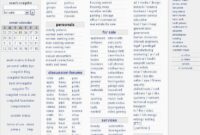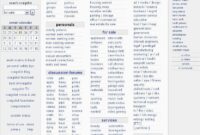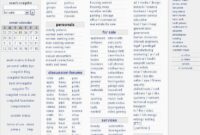Bed Liners For Pickup Trucks pickup.truckstrend.com
The pickup truck is more than just a vehicle; for many, it’s a workhorse, an adventure companion, and a vital tool for daily life. Its open bed, while offering immense utility, is also its most vulnerable component. Constantly exposed to the elements, abrasive cargo, and impact, the truck bed faces a relentless assault that can lead to scratches, dents, and ultimately, rust. This is where the unsung hero of truck accessories, the bed liner, steps in.
A bed liner is essentially a protective layer applied to the interior surface of a pickup truck’s bed. Its primary purpose is to shield the truck bed from physical damage, chemical spills, and environmental wear, thereby preserving the vehicle’s integrity, appearance, and resale value. From the construction site to the campsite, a well-chosen bed liner ensures your truck can handle whatever you throw at it – literally – without compromising its longevity. Understanding the various types, their benefits, and crucial considerations is key to making an informed decision that will protect your investment for years to come.
Bed Liners For Pickup Trucks
Why Your Pickup Truck Needs a Bed Liner: The Core Benefits
Investing in a bed liner isn’t just about aesthetics; it’s about practical protection and long-term value. Here’s why it’s an essential accessory for any pickup truck owner:
- Superior Protection Against Damage: The most obvious benefit. A bed liner acts as a robust barrier, absorbing impacts and preventing scratches, dents, and abrasions from tools, equipment, landscaping materials, and anything else you haul. Without one, a single sharp object or heavy drop can permanently mar your truck bed.
- Rust and Corrosion Prevention: Exposed metal, especially in a truck bed that frequently encounters moisture, dirt, and chemicals, is highly susceptible to rust. A bed liner creates an impermeable shield, preventing water, mud, and corrosive substances from reaching the metal surface. This is particularly crucial in areas with harsh winters or humid climates.
- Enhanced Cargo Stability: Many bed liners, especially spray-on and rubber mat types, feature a textured, non-slip surface. This increased friction helps prevent cargo from sliding around during transit, reducing potential damage to your items and the truck bed itself, while also ensuring safer driving.
- Preservation of Resale Value: A pristine truck bed indicates a well-maintained vehicle. If you ever decide to sell your truck, a bed liner ensures the bed remains in excellent condition, significantly contributing to a higher resale value and making your truck more appealing to prospective buyers.
- Improved Aesthetics: While protection is paramount, a bed liner also gives your truck bed a clean, finished, and professional look. It covers up existing minor imperfections and provides a uniform appearance that enhances the overall appeal of your truck.
- Noise Reduction: Some bed liners, particularly thicker spray-on applications and soft liners, can help dampen road noise and vibrations, contributing to a quieter ride.

Decoding the Types of Bed Liners
The market offers a variety of bed liner types, each with its own characteristics, advantages, and drawbacks. Choosing the right one depends heavily on your specific needs, budget, and how you intend to use your truck.
1. Drop-In Bed Liners
Description: These are rigid, pre-formed plastic inserts that are molded to fit the contours of specific truck beds. They are typically made from high-density polyethylene (HDPE).
- Pros:
- Affordable: Generally the least expensive option upfront.
- Easy DIY Installation: Simply "drops in," often requiring minimal or no drilling.
- Good Impact Protection: The thick plastic provides excellent protection against heavy drops and impacts.
- Removable: Can be taken out for cleaning or replacement.
- Cons:
- Moisture Trapping: A significant drawback is the space between the liner and the truck bed, which can trap water, dirt, and debris. This trapped moisture, combined with friction, can lead to rust and paint abrasion underneath the liner over time.
- Less Custom Fit: While designed for specific models, the fit isn’t always perfectly snug, allowing for movement and potential rubbing.
- Slippery Surface: The smooth plastic can be slippery, causing cargo to shift during transit.
- UV Degradation: Can fade, crack, or warp over time with prolonged sun exposure.
- Installation: Usually involves cleaning the truck bed thoroughly, then placing the liner. Some models might require drilling a few holes for fasteners to prevent shifting.
2. Spray-On Bed Liners
Description: These are permanent, polyurethane-based coatings that are professionally sprayed directly onto the truck bed surface, forming a seamless, textured bond. Brands like Line-X and Rhino Linings are popular examples.
- Pros:
- Superior Protection: Forms an impenetrable, watertight, and highly durable barrier against impacts, chemicals, and rust.
- Seamless Custom Fit: Adheres directly to every contour of the truck bed, leaving no gaps for moisture or debris.
- Excellent Non-Slip Surface: The textured finish provides superior grip, preventing cargo from sliding.
- Permanent Bond: Becomes an integral part of the truck bed, offering long-lasting protection.
- UV Stable: Most quality spray-on liners offer excellent UV resistance, preventing fading and degradation.
- Adds Resale Value: Considered a premium upgrade that enhances the truck’s overall appeal and value.
- Cons:
- Higher Cost: Significantly more expensive than drop-in liners, especially for professional application.
- Professional Installation Recommended: Requires specialized equipment and expertise for proper application, including meticulous surface preparation (sanding, degreasing, masking).
- Permanent: Once applied, it cannot be easily removed without extensive effort.
- Application Quality Varies: The final result depends heavily on the skill of the applicator.
- Installation: A multi-step process involving thorough cleaning, sanding to etch the surface for adhesion, masking off areas, applying multiple coats of the polyurea/polyurethane mixture, and a curing period. DIY kits are available but often yield less professional results.
3. Bed Mats and Rugs
Description: These are removable, non-permanent solutions that cover only the floor of the truck bed. Mats are typically made from thick, heavy-duty rubber, while rugs (like BedRug) are padded, carpet-like materials.
- Pros:
- Affordable and Easy: Very budget-friendly and requires no installation – just lay it down.
- Excellent Cargo Grip: Rubber mats provide superb anti-slip properties.
- Removable: Can be easily taken out for cleaning or when not needed.
- Comfort (Rugs): Soft liners offer a comfortable surface, gentle on delicate cargo.
- Impact Absorption (Mats): Thick rubber offers good cushioning for the bed floor.
- Cons:
- Limited Protection: Only protects the bed floor; sides, tailgate, and front bulkhead remain exposed.
- Can Shift: Less secure than other options, especially with heavy loads or aggressive driving.
- Moisture Trapping (Mats): Like drop-ins, can trap moisture underneath if not regularly removed and dried.
- Installation: Simply unroll and place in the truck bed. Some soft rugs may use Velcro or adhesive strips for a more secure fit.
4. Custom-Fit Soft Liners (e.g., BedRug)
Description: These are comprehensive, padded liners made from closed-cell foam and polypropylene, custom-molded to cover the entire truck bed, including sides and tailgate. They offer a carpet-like feel but are water-resistant.
- Pros:
- Full Coverage: Protects the entire bed, including sides and tailgate.
- Cargo Protection: Padded surface is gentle on delicate cargo and comfortable for kneeling.
- Water-Resistant: While soft, the material is designed to resist water and dry quickly.
- Insulation: Can provide some insulation, keeping the bed cooler in summer and warmer in winter.
- Good Grip: Textured surface prevents cargo from sliding.
- Easy on Knees: Comfortable for working in the truck bed.
- Cons:
- Higher Cost: More expensive than mats or basic drop-ins.
- Less Abrasion Resistance: While durable, not as resistant to sharp objects or heavy-duty abrasion as spray-on or hard plastic liners.
- Installation: More involved than a mat, typically using Velcro and adhesive for a snug fit.
Key Considerations When Choosing Your Bed Liner
Making the right choice involves evaluating several factors related to your truck’s use and your personal preferences:
- Your Truck’s Primary Use:
- Heavy-Duty/Construction: Spray-on or robust drop-in for maximum impact and abrasion resistance.
- Light-Duty/Recreational: A mat or soft liner might suffice for occasional hauling of groceries, camping gear, or light furniture.
- Outdoor/Off-Road: Spray-on for ultimate weather and rust protection.
- Durability and Material: Consider the liner’s resistance to UV rays, chemicals, and extreme temperatures. Polyurethane (spray-on) offers superior durability.
- Installation Method: Are you comfortable with a DIY drop-in or mat, or do you prefer the professional application of a spray-on liner?
- Drainage: If considering a drop-in, ensure it has proper drainage channels or consider adding spacers to prevent moisture buildup.
- Budget: Bed liners range widely in price. Balance initial cost with long-term value and protection.
- Aesthetics and Grip: Decide if a seamless, integrated look is important, and how much cargo stability you need.
- Maintenance: How easy is the liner to clean? Can it be easily repaired if damaged?
Installation & Maintenance Tips
Proper installation and ongoing maintenance are crucial for maximizing the lifespan and effectiveness of any bed liner.
- For Drop-In Liners:
- Pre-Installation Clean: Thoroughly clean and dry your truck bed before installation. Apply a protective wax or paint sealant to the bed’s surface.
- Drainage Check: Ensure the liner’s drain holes align with the truck bed’s, or drill new ones if necessary.
- Regular Cleaning: Periodically remove the drop-in liner to clean out any trapped dirt, leaves, and moisture underneath. This is vital to prevent hidden rust.
- For Spray-On Liners:
- Professional Application: For best results, always opt for a reputable, certified installer. Poor surface preparation or improper application can lead to peeling or bubbling.
- Curing Time: Adhere strictly to the manufacturer’s recommended curing time before putting heavy loads in the bed.
- Cleaning: Simply wash with soap and water, or a pressure washer. Avoid harsh chemicals that aren’t recommended by the manufacturer.
- For Mats/Rugs:
- Regular Removal: Take out the mat or rug periodically to clean the truck bed floor underneath, especially after hauling wet or dirty items.
- Drying: Ensure both the mat/rug and the truck bed are completely dry before putting the mat back to prevent mildew or rust.
- General Tips:
- Inspect Regularly: Check your liner for any signs of damage, cracks, or wear. Address small issues before they become larger problems.
- Avoid Harsh Chemicals: Use only recommended cleaning solutions to avoid degrading the liner’s material.
Addressing Common Challenges
While bed liners offer immense benefits, potential issues can arise. Knowing how to address them can save you headaches and money.
- Challenge: Rust under Drop-In Liners.
- Solution: This is the most common complaint. It’s caused by moisture and debris getting trapped between the liner and the bed, creating a humid, abrasive environment. Prevention is key: ensure good drainage during installation, and regularly remove the liner to clean and dry the truck bed underneath. Some owners apply a protective coating (like a thin layer of rubberized undercoating or paint sealant) to the bed before installing the drop-in.
- Challenge: Peeling or Fading Spray-On Liners.
- Solution: This often points to poor surface preparation during application or a low-quality product. Ensure you choose a reputable installer for spray-on liners. Look for brands known for UV stability to prevent fading. If peeling occurs, professional repair might be necessary.
- Challenge: Cargo Still Slides on Smooth Liners.
- Solution: If you have a smooth drop-in liner, consider adding a rubber mat on top for extra grip. For any liner, securing cargo with tie-downs is always recommended, especially for heavy or delicate items.
- Challenge: High Cost of Spray-On Liners.
- Solution: While the initial investment is higher, consider the long-term benefits. A high-quality spray-on liner is a permanent solution that significantly extends the life and maintains the value of your truck bed, potentially saving you more in repairs or depreciation down the line. It’s an investment in the truck’s longevity.
Estimated Costs for Pickup Truck Bed Liners (2023-2024)
Prices can vary significantly based on truck make/model, regional labor costs, and specific features. The table below provides general estimated ranges.
| Type of Liner | Material/Features | Typical Price Range (USD) | Installation Type | Pros | Cons |
|---|---|---|---|---|---|
| Drop-In Liner | Molded HDPE Plastic (ribbed, over/under rail options) | $150 – $350 | DIY (easy) | Affordable, good impact protection, removable, quick install. | Can trap moisture/rust, less custom fit, slippery, UV fade. |
| Spray-On Liner | Polyurethane/Polyurea (various textures, colors) | ||||
| DIY Kit | Roll-on/Spray-on kit (e.g., Herculiner, Raptor Liner) | $100 – $250 | DIY (moderate-hard) | Cost-effective, good protection if applied well. | Requires meticulous prep, can be messy, less durable than pro. |
| Professional | High-quality spray (e.g., Line-X, Rhino Linings) | $450 – $800+ | Professional | Superior protection, seamless, non-slip, custom fit, durable. | Higher cost, permanent, application quality depends on installer. |
| Bed Mat | Heavy-duty Rubber or Thermoplastic | $70 – $200 | DIY (very easy) | Affordable, excellent cargo grip, removable, easy clean. | Only covers floor, can shift, limited protection, can trap moisture. |
| Soft Liner (Rug) | Padded Polypropylene (carpet-like, custom-fit) | $300 – $600 | DIY (easy-moderate) | Full bed coverage, gentle on cargo, comfortable, water-resistant. | Higher cost, less abrasion resistance than hard liners. |
Note: Prices do not include potential tax or additional accessories like tie-downs or cargo management systems.
Frequently Asked Questions (FAQ)
Q1: Are bed liners worth the investment?
A1: Absolutely. A bed liner is a relatively small investment that provides significant protection against damage, rust, and depreciation, ultimately extending the life and preserving the value of your truck.
Q2: Do spray-on liners add a lot of weight to the truck?
A2: No. While they add some weight, it’s typically negligible, usually between 25-50 pounds for a full bed, which won’t impact your truck’s performance or fuel economy noticeably.
Q3: Can I install a drop-in liner myself?
A3: Yes, drop-in liners are designed for easy DIY installation. Just ensure the truck bed is clean and dry, and follow any manufacturer instructions regarding fasteners or drainage.
Q4: How long do spray-on liners last?
A4: High-quality professional spray-on liners are designed to last the lifetime of the truck. Many come with limited lifetime warranties against bubbling, peeling, or cracking.
Q5: Will a bed liner prevent all rust?
A5: A bed liner significantly reduces the risk of rust by preventing moisture and corrosive materials from directly contacting the metal. However, no solution is 100% foolproof. For drop-in liners, regular cleaning underneath is essential to prevent hidden rust. For spray-on liners, proper application is key to prevent rust under the coating.
Q6: Does a bed liner affect my truck’s warranty?
A6: Generally, installing an aftermarket accessory like a bed liner should not void your truck’s factory warranty, as long as it doesn’t directly cause a failure of a covered component. However, it’s always wise to check with your dealership if you have concerns.
Conclusion
A bed liner is far more than just an accessory; it’s a critical shield for your pickup truck’s most hardworking component. By understanding the distinct advantages and potential drawbacks of drop-in, spray-on, mat, and soft liners, you can make an informed decision that aligns with your truck’s usage and your budget. Whether you opt for the robust, permanent protection of a spray-on liner or the flexible utility of a removable mat, the goal remains the same: to safeguard your investment, maintain its functionality, and preserve its aesthetic appeal. Choose wisely, care for it properly, and your truck bed liner will ensure your pickup remains ready for any challenge, load, or adventure for years to come.


